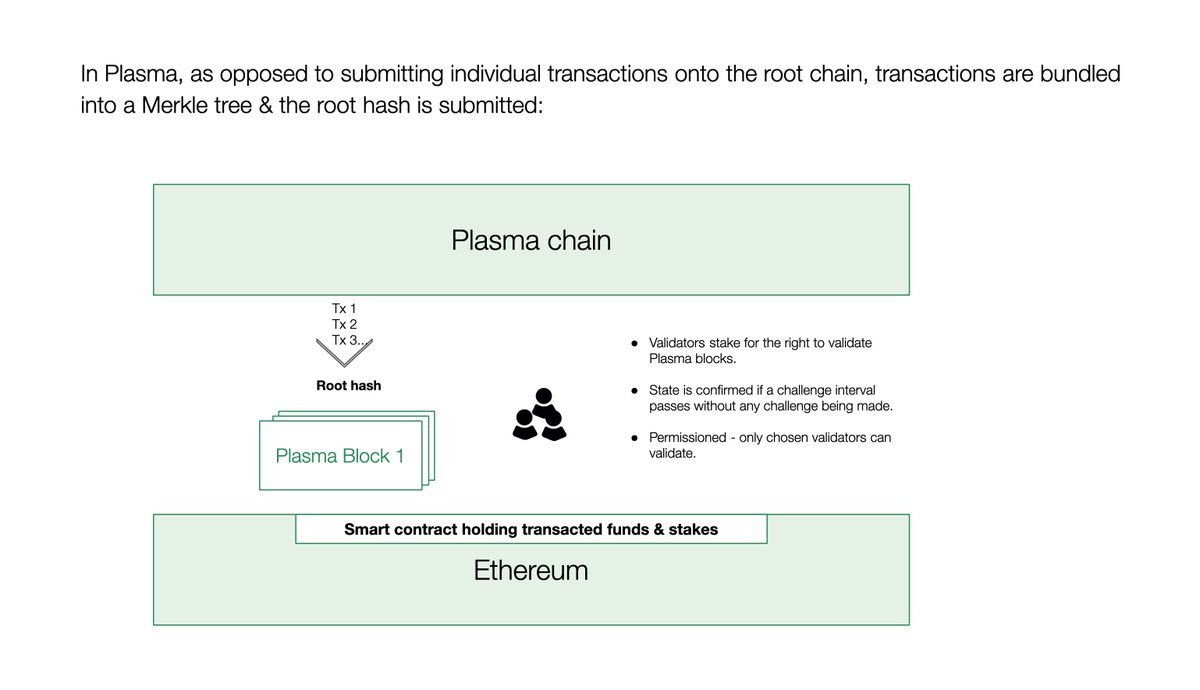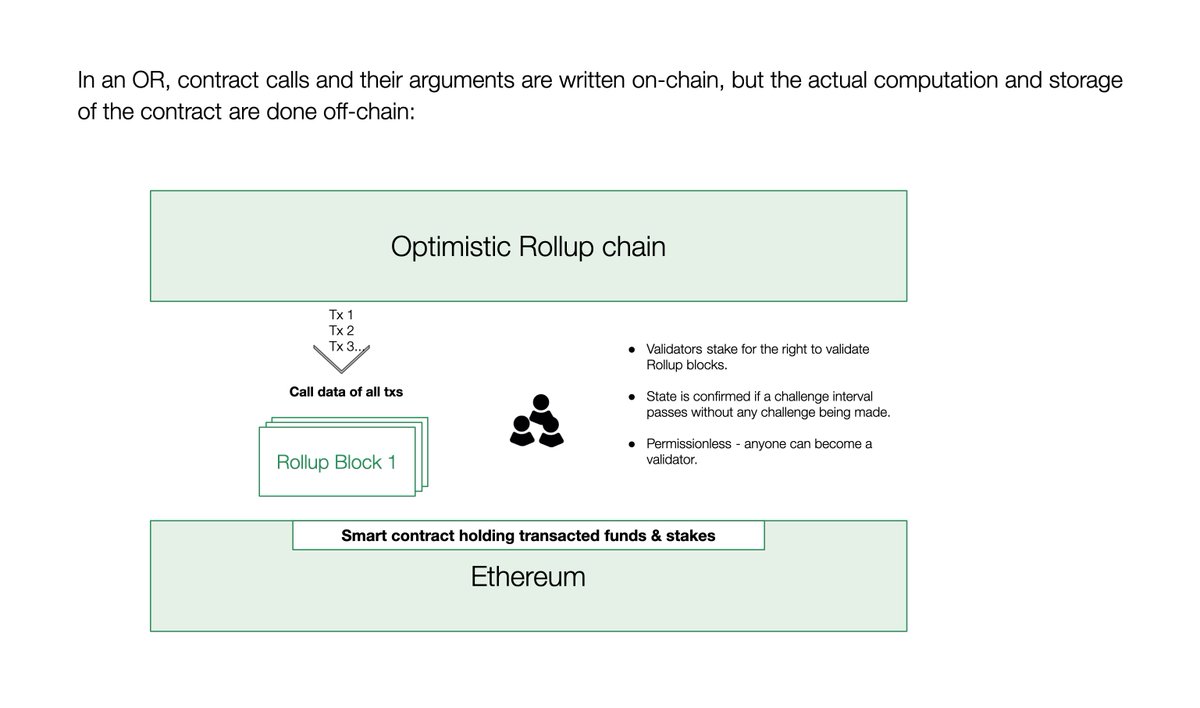1/ A thread on different Ethereum L2 scaling techniques
We will be releasing separate ELI5 threads on @SkaleNetwork, @omgnetworkhq, @optimismPBC and @zksync in the coming days.

We will be releasing separate ELI5 threads on @SkaleNetwork, @omgnetworkhq, @optimismPBC and @zksync in the coming days.
2/ What is meant by L2 scaling?
L2 scaling techniques move txs off-chain and bundle them into proofs that are submitted back to the main chain (external scaling).
L1 scaling techniques try to improve the throughput of the main chain through sharding (internal scaling).
L2 scaling techniques move txs off-chain and bundle them into proofs that are submitted back to the main chain (external scaling).
L1 scaling techniques try to improve the throughput of the main chain through sharding (internal scaling).
3/ L2 scaling solutions can roughly be divided into:
1. State channels
2. Sidechains
State channels assume a fixed set of participants where everyone acts as a validator, whereas sidechains have a separate validator set and allow anyone to use the network.
1. State channels
2. Sidechains
State channels assume a fixed set of participants where everyone acts as a validator, whereas sidechains have a separate validator set and allow anyone to use the network.
4/ What are state channels?
In state channels, state changes are made by a fixed set of live participants.
Any update to the channel must be digitally signed by all channel participants.
In state channels, state changes are made by a fixed set of live participants.
Any update to the channel must be digitally signed by all channel participants.
5/ What are sidechains?
They are either:
1. Custodial - assets are moved to a parallel chain with its own consensus mechanism & security.
2. Non-custodial - assets are held & state is secured by smart contracts on Ethereum (= can survive an attack of the sidechain).
They are either:
1. Custodial - assets are moved to a parallel chain with its own consensus mechanism & security.
2. Non-custodial - assets are held & state is secured by smart contracts on Ethereum (= can survive an attack of the sidechain).
6/ What is Plasma?
Plasma is a general framework for building non-custodial sidechains.
However, unlike custodial sidechains, Plasma chains derive their security from the main chain (Ethereum).
In Plasma, the block headers (snapshots of the balances) are enforced on Ethereum.
Plasma is a general framework for building non-custodial sidechains.
However, unlike custodial sidechains, Plasma chains derive their security from the main chain (Ethereum).
In Plasma, the block headers (snapshots of the balances) are enforced on Ethereum.
7/ What are Rollups?
Rollups are non-custodial sidechains that solve Plasma's data availability problem.
Rollup blocks include enough data for anyone to reconstruct & challenge their state.
In Plasma, only a subset of validators can challenge blocks sent to the main chain.
Rollups are non-custodial sidechains that solve Plasma's data availability problem.
Rollup blocks include enough data for anyone to reconstruct & challenge their state.
In Plasma, only a subset of validators can challenge blocks sent to the main chain.
8/ Rollups come in two flavours:
1. Optimistic rollups - ORs depend on a dispute game run by active validators.
2. ZkRollups - ZKRs rely on cryptographic zero-knowledge (ZK) proofs, which are instantly validated by a smart contract.
1. Optimistic rollups - ORs depend on a dispute game run by active validators.
2. ZkRollups - ZKRs rely on cryptographic zero-knowledge (ZK) proofs, which are instantly validated by a smart contract.
9/ What are Optimistic rollups?
ORs resemble Plasma sidechains, but tradeoff some of their scalability to run fully general smart contracts (whereas ZKRs are currently better suited for simple payment transactions).
ORs can run anything Ethereum can.
ORs resemble Plasma sidechains, but tradeoff some of their scalability to run fully general smart contracts (whereas ZKRs are currently better suited for simple payment transactions).
ORs can run anything Ethereum can.
10/ What are ZkRollups?
In a ZKR, validators generate ZK proofs of all state transitions.
ZK proofs are instantly verified by the Rollup contract on Ethereum.
This means that it is extremely difficult to manipulate a block or commit a block with an invalid state.
In a ZKR, validators generate ZK proofs of all state transitions.
ZK proofs are instantly verified by the Rollup contract on Ethereum.
This means that it is extremely difficult to manipulate a block or commit a block with an invalid state.
11/ We recommend checking out @the_matter_labs’s comparison framework of different L2 scaling solutions: https://docs.google.com/spreadsheets/d/19hl6CxG-RfWKsDEa86ZHWkHGvplyW4J1TqKFvcbbyvs/edit#gid=0
Fin/ Thanks to @DZack23 for comments and insights on the topics discussed in this thread.

 Read on Twitter
Read on Twitter





